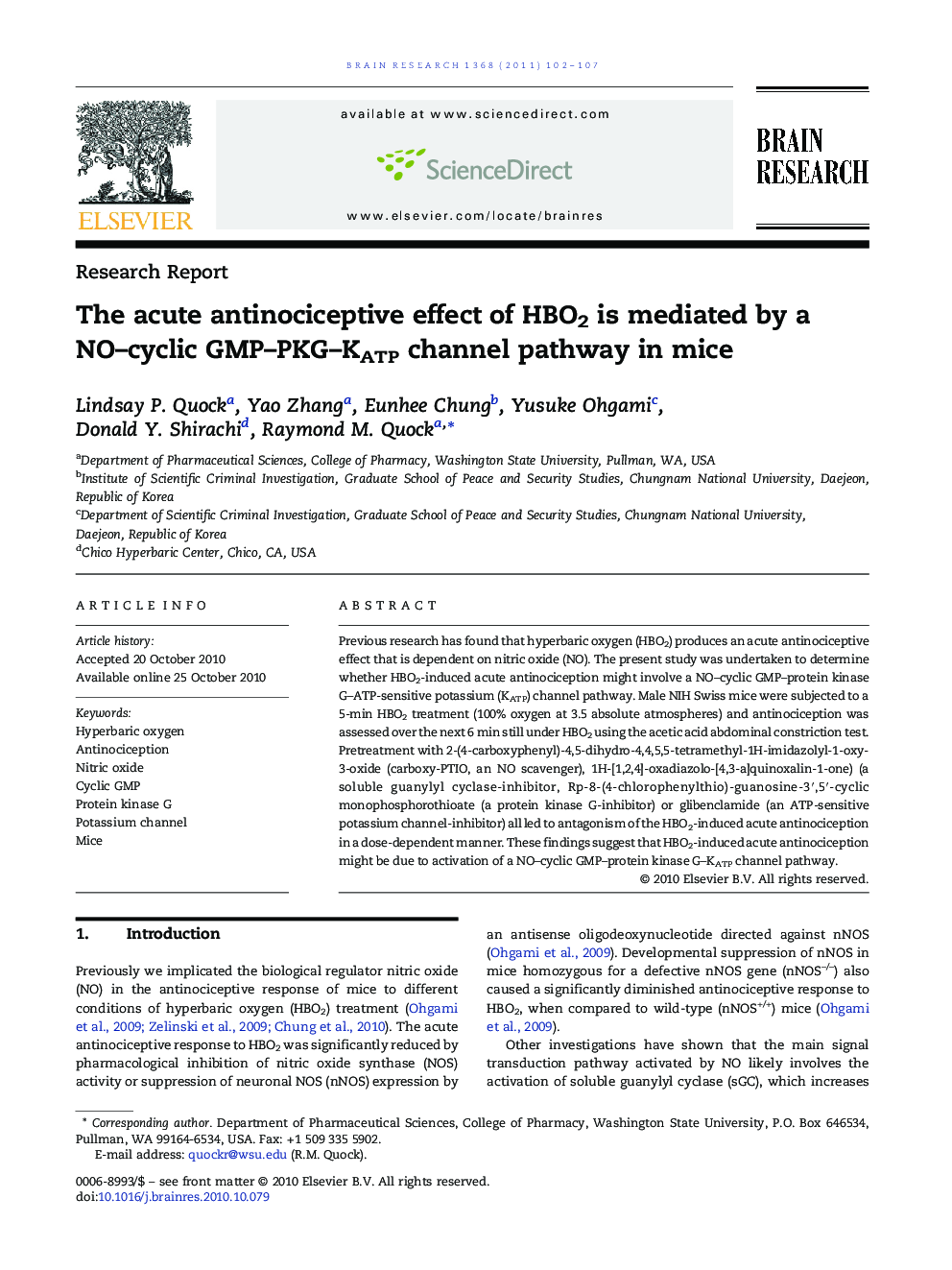| کد مقاله | کد نشریه | سال انتشار | مقاله انگلیسی | نسخه تمام متن |
|---|---|---|---|---|
| 4326212 | 1614071 | 2011 | 6 صفحه PDF | دانلود رایگان |

Previous research has found that hyperbaric oxygen (HBO2) produces an acute antinociceptive effect that is dependent on nitric oxide (NO). The present study was undertaken to determine whether HBO2-induced acute antinociception might involve a NO–cyclic GMP–protein kinase G–ATP-sensitive potassium (KATP) channel pathway. Male NIH Swiss mice were subjected to a 5-min HBO2 treatment (100% oxygen at 3.5 absolute atmospheres) and antinociception was assessed over the next 6 min still under HBO2 using the acetic acid abdominal constriction test. Pretreatment with 2-(4-carboxyphenyl)-4,5-dihydro-4,4,5,5-tetramethyl-1H-imidazolyl-1-oxy-3-oxide (carboxy-PTIO, an NO scavenger), 1H-[1,2,4]-oxadiazolo-[4,3-a]quinoxalin-1-one) (a soluble guanylyl cyclase-inhibitor, Rp-8-(4-chlorophenylthio)-guanosine-3′,5′-cyclic monophosphorothioate (a protein kinase G-inhibitor) or glibenclamide (an ATP-sensitive potassium channel-inhibitor) all led to antagonism of the HBO2-induced acute antinociception in a dose-dependent manner. These findings suggest that HBO2-induced acute antinociception might be due to activation of a NO–cyclic GMP–protein kinase G–KATP channel pathway.
Research Highlights
► Hyperbaric oxygen (HBO2) induces antinociception in the mouse abdominal constriction test.
► HBO2 antinociception depends on NO, cyclic GMP and PKG.
► There is also involvement of ATP-sensitive potassium channels in HBO2 antinociception.
Journal: Brain Research - Volume 1368, 12 January 2011, Pages 102–107